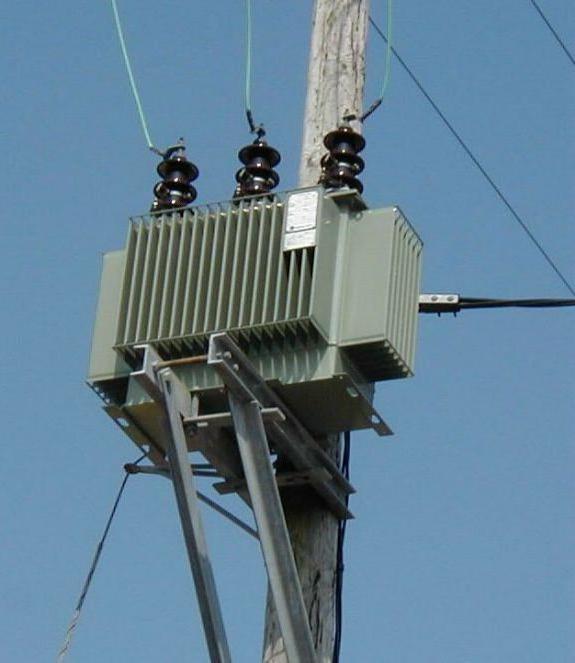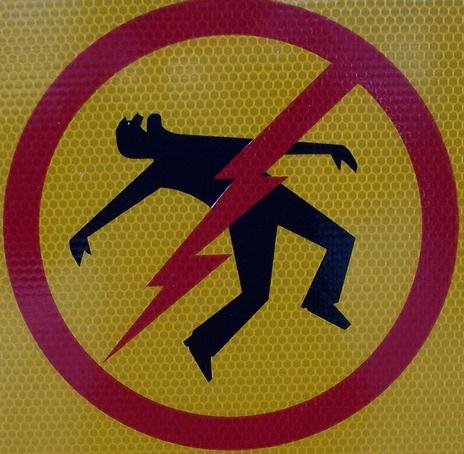Mast transformer substation: operating principle and purpose
Transformer substations are integralpart of the modern energy infrastructure. They are used at the stage of power distribution, allowing to minimize the processes of distortion of current characteristics when it is transmitted over long distances. There are different types of such objects, which differ in design features, approach to installation and operation. In turn, the mast transformer substation is the most common construction of this type, providing a number of advantages.
General information about the mast substation

The mast, or pole, substation is performed inthe form of a single transformer block, which, depending on the characteristics, can operate with a power range of 25-250 kVA. In the course of operation, such installations can on average receive AC electricity with a voltage of about 6 kV. Under condition of qualitative installation the column transformer substation is able to maintain optimal performance in both frost and high temperatures in the summer.
Threats related towith a direct function of such objects. Depending on the operating conditions, there may be risks of short circuits, line overloads, phase-to-phase failures and overvoltages. For this reason, already in the basic configuration, the mast transformer substation is supplied with a wide range of protective systems. In addition, electrical and mechanical safety locks are provided to ensure safety for maintenance personnel.
Designation of mast substation

The function of the transformer substation is related tothe need to reduce losses in power transmission lines. This task can be achieved in different ways, but in this case the installation should provide an increase in the voltage in the network. For this, the substation is provided by an electrical installation that performs the function of conversion and distribution of energy. In the work process, several components are involved, among them - switchgears, control systems and auxiliary mechanisms that provide tasks to support the work of the facility itself. Again, depending on the scope and operating conditions, the distribution of electrical energy by the mast substation can occur with different characteristics of the power system. Also in some models, the electricity metering task is envisaged. It is achieved with the help of preset counters, which can work according to the principle of electrochemical reactions, and due to mechanical action.
Operating principle

The source of energy supplied by the substation,are full-fledged power generation facilities. From them, the voltage is applied to the converting and distributing substation, which is most often located nearby. The above-mentioned function of increasing the voltage in order to minimize losses in the line is performed due to the action of step-up transformer apparatuses. In the future, the receiver of electricity can act as a step-down transformer, which optimizes the voltage characteristics to the optimum from the point of view of use in the local network. For stable performance of these tasks, the mast transformer substation must be regularly cooled. Typically, cooling systems are devices with oil feed mechanisms. This is one of the systems that improve the reliability of substations of this type.
Types of mast substations
There are two approaches to implementationstructural design of such substations. A simpler version is a complete transformer substation, which has an A-shaped external design. The structure of such structures includes a set of disconnectors with drive mechanisms, discharge elements, fuses and directly power transformer block with a distribution module.

The second option is a complicated,more functional and productive U-shaped station. And if the first variety is most often complete, then in this case, the installation can be done using ready-to-install blocks. However, the complete transformer substation is often used in this configuration. The composition of this system includes the same set of components, but with some differences. In particular, the U-shaped station also has voltage limiters, and the distribution module is usually represented by low-voltage devices
How to install a column transformer substation?
Mounting measures include the implementation ofseveral operations, among which - the delivery of equipment, assembly activities and fastening of support elements. Next, the alignment of the installation is performed, after which the prepared blocks are filled with electrical equipment. Direct connection of devices among themselves is made only after final revision and adjustment of devices. Usually, the mast transformer substation is equipped with special equipment. For example, a power transformer can be lifted onto a support by a crane. Then, the block is fixed - on reinforced concrete supports, the fixation is made using a metal frame, which in turn is held on the support by metal clamps.
Conclusion

Pillar substations due to their constructionhave become widespread in various industries. The enterprises produce special models for exploitation in agriculture, improve the basic series of universal purpose, develop powerful complete facilities for servicing the needs of industrial facilities, etc. But regardless of the design, the transformer substation of the mast type is steadily developing technologically. Manufacturers produce components of a new generation, whose work is already built on the principles of automation. On the one hand, this transition complicates the design and management of them, but on the other hand it helps optimize energy costs and financial maintenance costs, not to mention improving reliability and safety.
</ p>>





